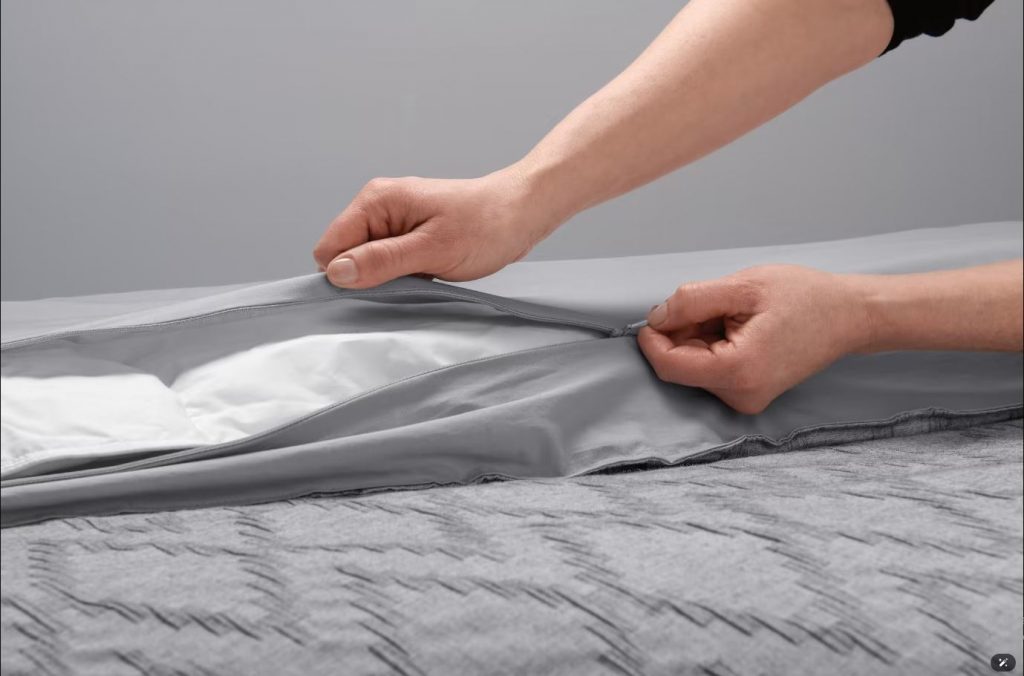SEO Blog
What is a Duvet Cover?
What is a Duvet Cover?
A duvet cover is a protective fabric shell designed to cover and safeguard a duvet insert, often referred to as a comforter in some regions. This essential bedding accessory not only enhances the appearance of your bed but also offers practical benefits, including ease of cleaning and prolonging the lifespan of the duvet insert. Understanding the role and types of duvet covers, along with comparing them to other bedding options, can help you make an informed choice that aligns with your sleep needs and bedroom decor preferences.
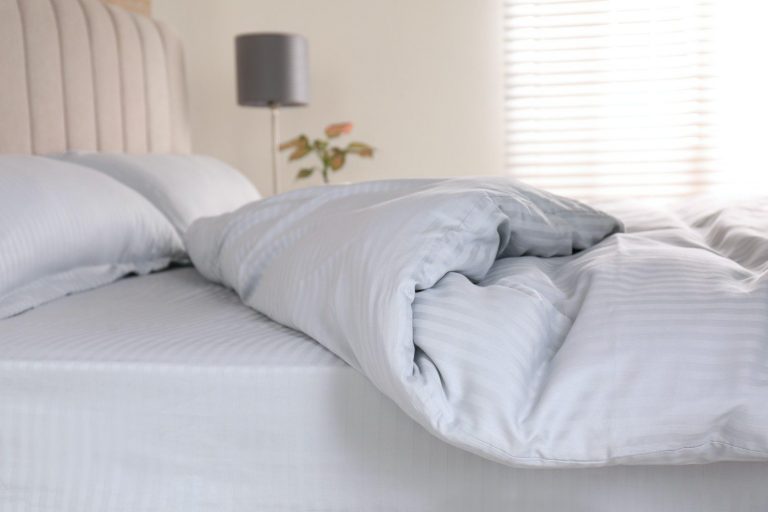
Duvet vs Comforter: Key Differences
What is a Duvet?
A duvet is a type of bedding specifically designed to provide warmth and comfort. It typically consists of a quilted blanket filled with a natural or synthetic filling, encased in a fabric shell. The duvet is used alone without additional blankets or sheets and is intended to be covered with a duvet cover.
What is a Comforter?
A comforter, on the other hand, is similar to a duvet but generally comes with its own fabric shell and does not require a separate cover. Comforters are often thicker and may be filled with a variety of materials, including down, feathers, or synthetic fibers. Unlike duvets, comforters are often used as the primary bedding layer and may be paired with sheets or mattress protectors.
Duvet Cover vs Comforter
The primary difference between a duvet cover and a comforter is that a duvet cover is a removable and washable cover used to protect a duvet insert. In contrast, a comforter is a single-piece bedding item that includes both the cover and the filling. Choosing between a duvet cover and a comforter depends on personal preference, the climate, and how frequently you wish to change or wash your bedding.
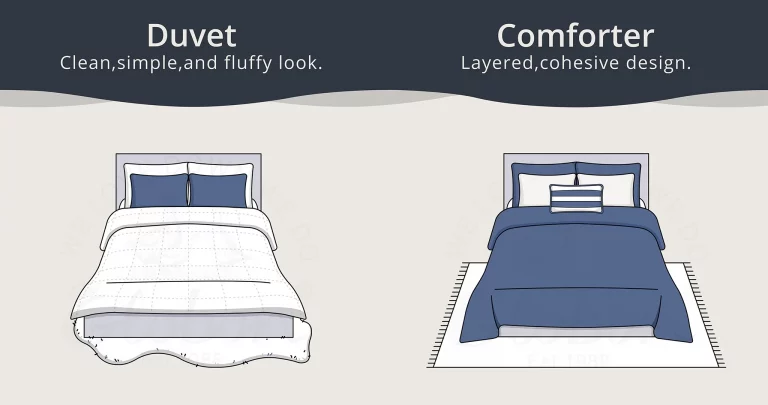
Types of Duvet Covers
Various Types of Duvet Covers
Duvet covers come in a range of materials, designs, and sizes to suit different needs and preferences. Here are some popular types:
- Cotton Duvet Covers: Known for their softness and breathability, cotton duvet covers are a popular choice for everyday use. They are available in various weaves, such as percale and sateen, offering different textures and finishes.
- Linen Duvet Covers: Linen is a natural fabric that is highly durable and has a relaxed, textured look. Linen duvet covers are ideal for warm climates due to their breathability and moisture-wicking properties.
- Sateen Duvet Covers: Made from cotton with a satin-like finish, sateen duvet covers are smooth, shiny, and often considered luxurious.
- Flannel Duvet Covers: Flannel is a warm and cozy option, perfect for colder weather. These covers are soft and provide extra warmth.
- Microfiber Duvet Covers: Microfiber is a synthetic fabric that is known for its durability and easy-care properties. It’s a good alternative for those who need a low-maintenance option.
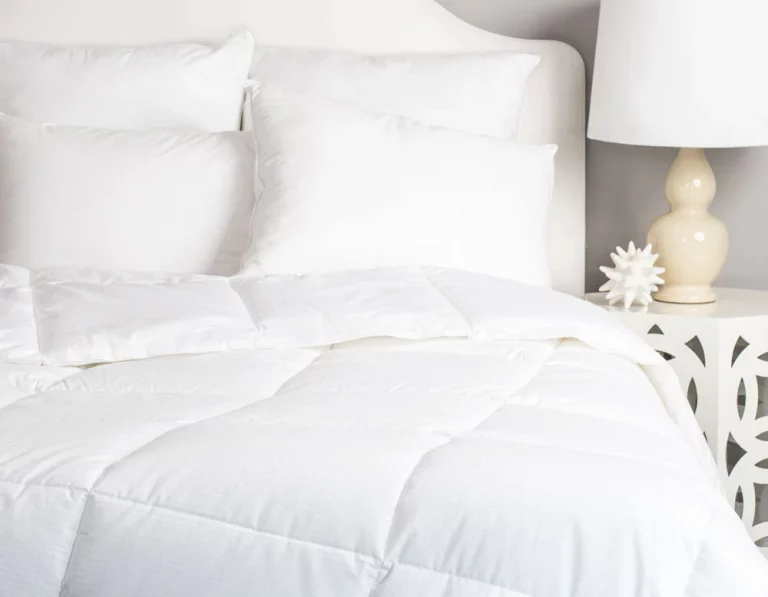
Choosing the Right Duvet Cover
When selecting a duvet cover, consider factors such as material, size, and design. Choose a material that suits your climate and personal comfort preferences. Ensure the duvet cover matches the size of your duvet insert for a proper fit, and select a design that complements your bedroom decor.
Duvet Inserts and Bedding Essentials
What is a Duvet Insert?
A duvet insert is the inner filling of a duvet. It is typically made of down, feathers, or synthetic materials and provides the insulation and warmth needed for a good night’s sleep. The duvet insert is placed inside the duvet cover, which protects it from dirt and damage.
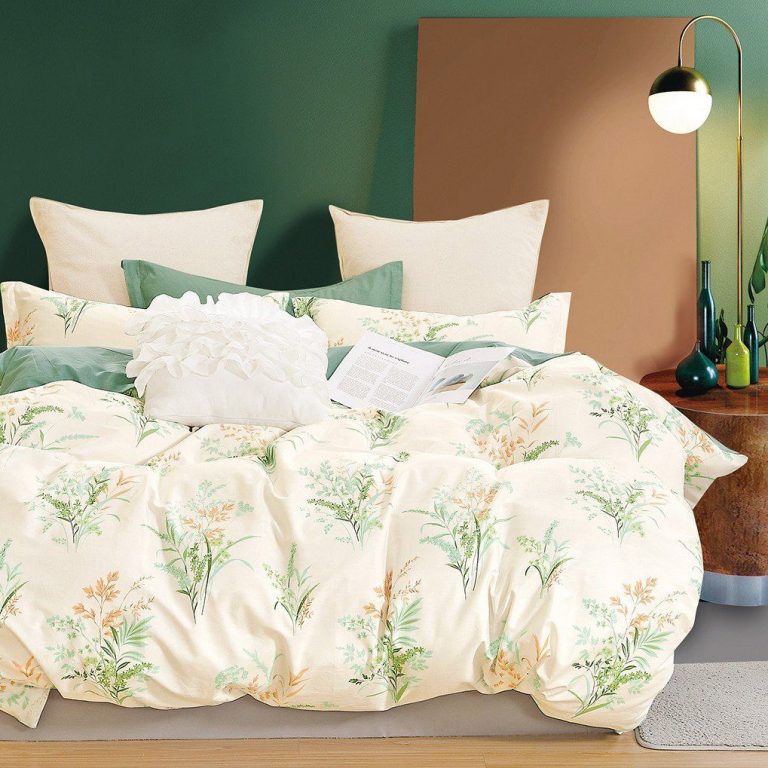
Bedding Essentials
Bedding essentials include all the necessary components for a well-made bed, such as sheets, pillows, mattress protectors, and duvet covers. A complete bedding set typically consists of a fitted sheet, a flat sheet, pillowcases, and a duvet cover. Proper bedding ensures comfort and hygiene, enhancing your overall sleep experience.
Bedding Sets and Bedroom Decor
Complete Bedding Sets
A bedding set usually includes a coordinated collection of items, such as a duvet cover, sheets, pillowcases, and sometimes a bed skirt. Bedding sets are designed to create a cohesive look and make it easier to style your bed and bedroom. Many sets come in various colors, patterns, and materials, including options like cotton, sateen, and flannel.
Incorporating Duvet Covers into Bedroom Decor
Duvet covers play a significant role in bedroom decor. They can add color, pattern, and texture to your bed, which helps set the tone for the room’s overall aesthetic. When choosing a duvet cover, consider how it will coordinate with other elements in your bedroom, such as curtains, rugs, and wall colors. For a modern look, opt for sleek designs and neutral tones, while floral or patterned covers can add a touch of personality and warmth.
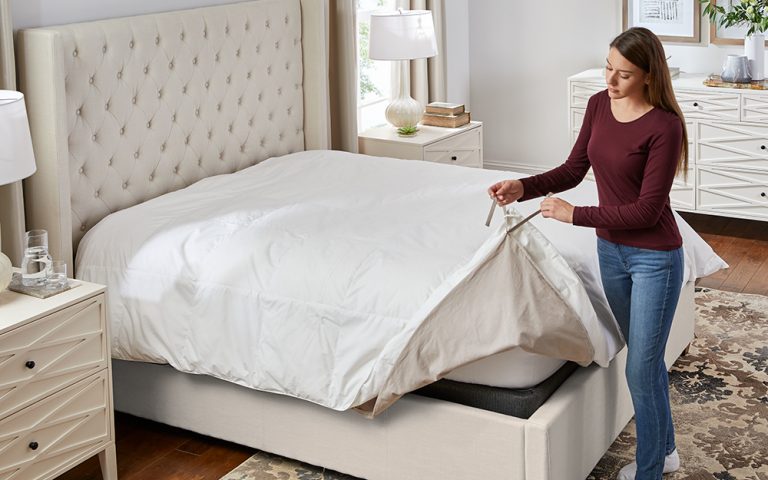
Quilt vs Duvet
What is a Quilt?
A quilt is a type of bed linen that consists of three layers: a top layer with a decorative design, a middle layer of padding or batting, and a bottom layer of fabric. Quilts are typically stitched or quilted to hold the layers together and often used as a decorative cover or an additional layer of warmth.
Comparing Quilts and Duvets
- Functionality: Duvets are generally used as the primary bedding layer and are covered with a duvet cover. Quilts, however, are often used as an extra layer of warmth or as a decorative throw.
- Ease of Care: Duvets and their covers are easy to remove and wash, whereas quilts may require more effort to clean due to their multi-layer construction.
- Warmth: Duvets provide adjustable warmth through different fillings, while quilts offer a fixed level of insulation based on their padding.
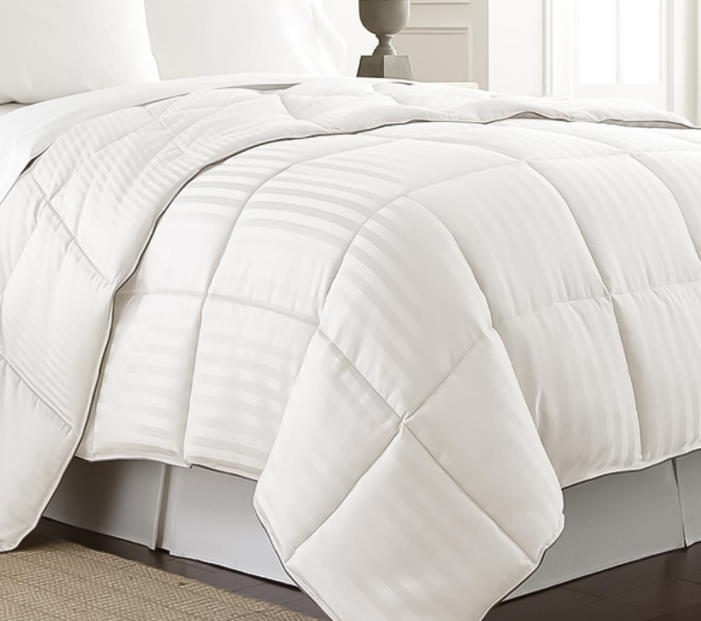
Types of Bedding and Bed Linen
Different Types of Bedding
Bedding encompasses a variety of items used to cover and adorn the bed, including sheets, pillowcases, comforters, and duvet covers. Each type of bedding serves a specific function, from providing comfort and warmth to adding style and protection.
Understanding Bed Linen
Bed linen includes all the fabric items used on the bed, such as sheets, pillowcases, and duvet covers. Bed linen helps protect the mattress and pillows, and it contributes to the overall comfort and aesthetic of the bedroom. The choice of bed linen material can impact your sleep quality and the ease of maintenance.
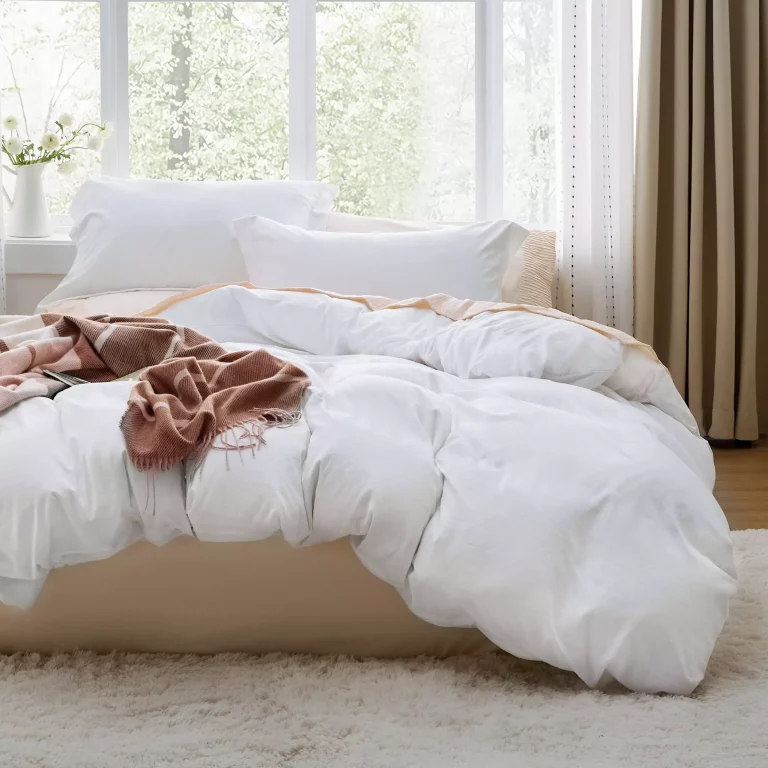
Hypoallergenic Duvet Covers
What are Hypoallergenic Duvet Covers?
Hypoallergenic duvet covers are designed to minimize allergens and reduce the risk of allergic reactions. They are typically made from materials that are less likely to harbor dust mites, mold, or other allergens.
Choosing a Hypoallergenic Duvet Cover
When selecting a hypoallergenic duvet cover, look for features such as tightly woven fabrics, antimicrobial treatments, and materials that are resistant to dust mites. Cotton, bamboo, and certain synthetics are popular choices for hypoallergenic bedding. Ensuring that your duvet cover is easy to clean and maintain will also help in keeping allergens at bay.
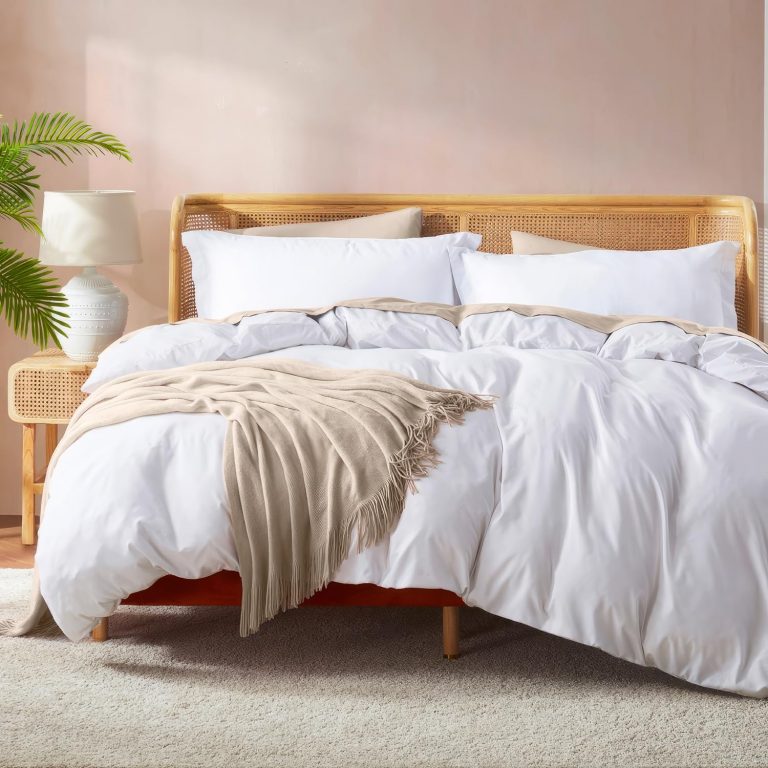
Practical Tips for Using Duvet Covers
How to Fit a Duvet into a Cover
- Lay the Duvet Cover on a Flat Surface: Open the duvet cover fully and place it on a clean surface, such as your bed or a large table.
- Align the Duvet Insert: Lay the duvet insert on top of the cover, ensuring that the corners are aligned.
- Secure the Corners: Use the ties or buttons inside the duvet cover to secure the corners of the duvet insert.
- Close the Cover: Zip or button up the duvet cover, then gently shake and fluff the duvet to distribute the filling evenly.
Maintaining and Cleaning Duvet Covers
- Washing Instructions: Follow the manufacturer’s care instructions for washing your duvet cover. Most can be machine washed in cold water and tumble dried on low heat.
- Spot Cleaning: For minor stains, spot clean with a mild detergent and water before washing.
- Storage Tips: Store your duvet cover in a cool, dry place when not in use to prevent damage and prolong its lifespan.
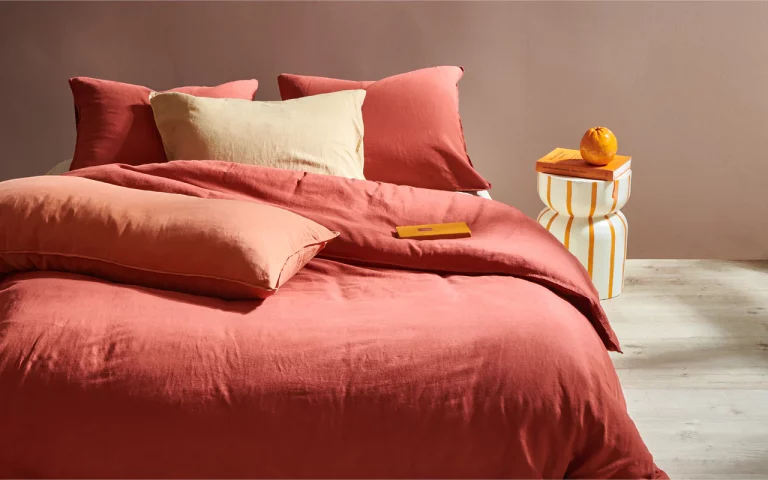
Frequently Asked Questions
What is the best material for a duvet cover?
The best material depends on your personal preference and needs. Cotton is popular for its softness and breathability, while linen offers durability and a relaxed look. Sateen provides a luxurious feel, and microfiber is known for its easy-care properties.
How often should I change my duvet cover?
It’s recommended to change and wash your duvet cover every 1-2 weeks to maintain hygiene and freshness. If you have allergies or pets, more frequent changes may be beneficial.
Can I use a duvet cover on a comforter?
While duvet covers are designed for duvets, you can use them on comforters if the size and design are compatible. However, comforters usually come with their own cover, so using a duvet cover might not be necessary.
How do I choose the right duvet cover size?
To choose the right size, measure your duvet insert and match it with the corresponding duvet cover size. Common sizes include twin, full, queen, and king, with each corresponding to standard bed sizes.
Are hypoallergenic duvet covers worth it?
If you suffer from allergies, hypoallergenic duvet covers can be a worthwhile investment. They help reduce allergen exposure and can improve sleep quality by creating a cleaner sleeping environment.
What is the difference between a duvet and a quilt?
A duvet is a standalone bedding item that requires a cover and provides adjustable warmth. A quilt is a multi-layered bedding item with decorative stitching, used for additional warmth or as a bedspread.
Conclusion
A duvet cover is a versatile and essential component of bedding that offers protection and style. By understanding the differences between duvet covers and other bedding options like comforters, as well as exploring the various types and their uses, you can make informed decisions to enhance your sleep experience and bedroom decor. Whether you choose a hypoallergenic cover, coordinate with bedding sets, or match with bedroom decor, the right duvet cover can significantly impact your comfort and aesthetic.
 Skip to content
Skip to content

